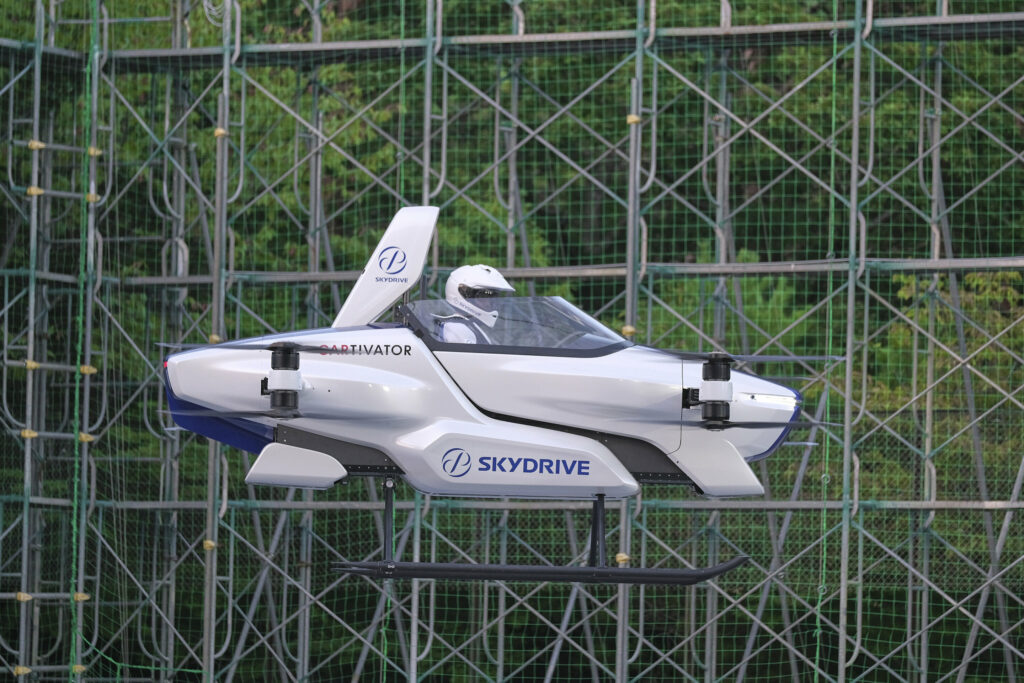If you asked people 40 years ago what they expect for 2020, staying home and social distancing wouldn’t have made it too high on the list. But you know what would have? Flying cars — and that’s exactly what a Japanese company is trialing.

It’s not exactly The Jetsons, but the century-old dream of flying cars is finally starting to take shape. Toyota-backed SkyDrive has carried out a successful, albeit small-scale test where a single-passenger vehicle was showcased.
SkyDrive featured the SD-03 — the smallest electric VTOL (vertical take-off and landing) vehicle in the world. According to the company, the flying car has 8 rotors that help it fly safely even in the event of a motor failure.
The single-seat vehicle took off early in the evening and circled about for 4 minutes, hovering some 2 meters above the ground. For now, the car can fly for 10 minutes at most, but according to SkyDrive, they’re aiming for 30 minutes of fly time, which would already offer real-life potential.
“Of the world’s more than 100 flying car projects, only a handful has succeeded with a person on board,” Tomohiro Fukuzawa, who spearheads the company, told The Associated Press. “I hope many people will want to ride it and feel safe.”
“We want to realize a society where flying cars are an accessible and convenient means of transportation in the skies and people are able to experience a safe, secure, and comfortable new way of life,” he added.
Of course, actually achieving that goal is still a ways away, although we’re on the right track. In principle at least, VTOLs could be much quicker and safer than other flying devices including helicopters, but actually making them practical is a much more challenging issue.
For starters, their autonomy needs to be increased substantially, and it’s not entirely clear how that will happen. Secondly, SkyDrive hasn’t offered any details about the potential price of such a device. As cool as it is, it needs to be at least somewhat affordable to be used, realistically speaking. There’s also the matter of capacity: a one-seat car isn’t exactly a car, and although SkyDrive is also working on a two-seater vehicle although that one hasn’t been showcased yet.
For now at least, the progress is encouraging. It wasn’t smooth sailing for SkyDrive: three years ago, the first test drive went poorly. Now, the issues seem to have been addressed (in part thanks to funding from the likes of Toyota and the state-owned Development Bank of Japan).
It might seem like flying cars are little more than an expensive pipe dream, but that was also the vibe when technologies like cars or airplanes were first introduced. It will take a while, but the Japanese government seems to be determined to support this endeavor. They’re still in the very early stages, but in a year like 2020, we’ll take everything we can get. Early-stage flying cars don’t even sound that bad.


